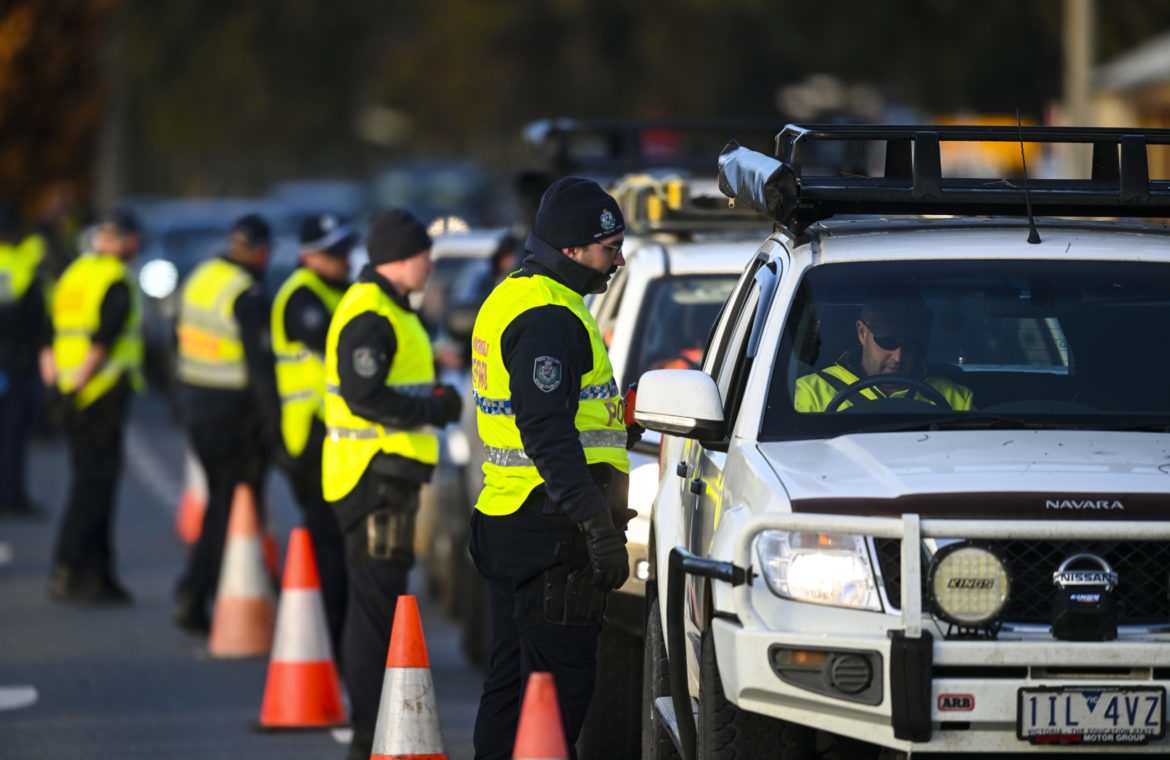The Andrews government, in apparent haste to look like it was doing something, appeared to do exactly the wrong thing.
Did the Victorian government inadvertently yell fire in a crowded theatre?
Ignoring the economic impact, safety risks and sheer inconvenience of snap border closures, there is a valid argument that public health trumps all. But does shutting borders and forcing hundreds of thousands of (possibly infected) travellers home help or worsen the public health problem?
As NSW Premier Gladys Berejiklian observed, “closing a border can affect literally tens and hundreds of thousands of people, depending on where it is, and that’s a big call”.
Last year, on March 15, Donald Trump compelled Americans in Europe to urgently rush home while at the same time completely failing to create any sort of infrastructure to deal with the sudden impact. As The Washington Post noted, “a policy intended to block the pathogen’s entry into the United States instead delivered one final viral infusion”.
On December 18, Victorians were warned against interstate travel to Sydney. The Northern Beaches cluster had leaked to the city’s inner-west and another independent cluster has emerged from overseas arrivals. In the week ending December 26, NSW recorded 63 local cases. On December 31, a drastic border closure was announced.
But NSW case numbers remained well contained. In the week ending January 2, 52 cases were recorded. The trend appeared positive and NSW Health was effectively managing the spread. In the week ending January 9, NSW recorded just 16 local cases.
So, did Victoria jump the gun?




The decision to the close the border came shortly after the state’s two-month run of zero community cases ended with travellers at a suburban Thai restaurant. It appears the decision to close the border to all of NSW had little to do with the actual risk emanating from broader NSW (which was minimal, and in hindsight has shown to be almost non-existent), but because a Sydney-sourced outbreak occurred in Melbourne.
The health implications of the Victorian border decision are significant. Tens of thousands of Victorians holidaying in NSW were forced to urgently return, some of whom may have been infected with COVID-19. At the same time, the Victorian Department of Health and Human Services (DHHS) had significantly scaled back testing capacity.
So while Victorians were compelled to return home, isolate and get tested, the Victorian government didn’t actually have the capacity to undertake the tests it was demanding. The DHHS would have been aware of Melbourne’s scaled-back testing capacity and had a near precise understanding of the number of Victorians who would be returning due to the permit system.
It is not without irony that Victorian Health Minister Martin Foley admonished those who left the state, while at the same time his department told thousands of testing staff to go on leave. This led to lengthy wait times at many testing venues, and other sites turning people away after hitting capacity.
On January 2, Victoria managed to process 18,337 tests. Across December 24 and 25, NSW processed almost 130,000 tests. In recent days, Victoria got its act together, with test numbers consistently rising above 30,000, but wait times were in excess of two hours in many stations.
If the Sydney cluster was a huge risk to public health, a more sensible approach would have been to require Victorians in Sydney specifically get tested and only be allowed to return after submitting a negative result (this is how the Victorian government handled this weekend’s Brisbane lockdown). There appeared to be little justification for forcing those outside the Sydney “red zones” to return (often requiring a dangerous drive home) — there were no pre-warnings and virtually zero cases outside the city.
Paradoxically, while locking the door to NSW, Victoria continues to welcome travellers from the COVID-ridden UK and US (and will soon embrace 1200 international players and officials for the Australian Open). How is country NSW, with virtually zero COVID, considered a hotspot?
The Victorian government, in apparent haste to look like it was doing something, appeared to do exactly the wrong thing.
The use of private security guards in hotel quarantine wasn’t the major failing of the Andrews government — it was an unlucky and inevitable event which has now been repeated multiple times in NSW, SA and now Queensland.
The real disaster of the Victorian government and the DHHS was inept testing and antiquated tracing systems.
Eight hundred dead Victorians and it appears little has been learned.




Fetch your first 12 weeks for $12
What a year. Here at Crikey, we saw a mighty surge in subscribers throughout 2020. Your support has been nothing short of amazing — we couldn’t have got through this year like no other without you, our readers.
If you haven’t joined us yet, fetch your first 12 weeks for $12 and start 2021 with the journalism you need to navigate whatever lies ahead.
Peter Fray
Editor-in-chief of Crikey








